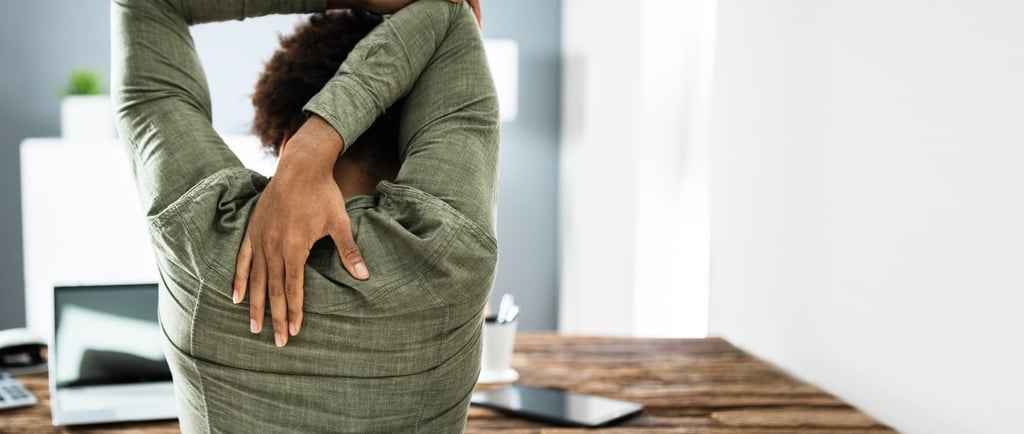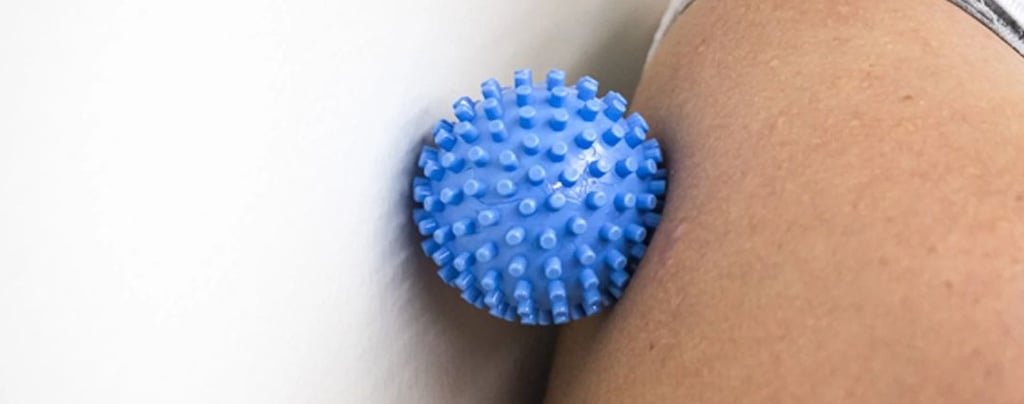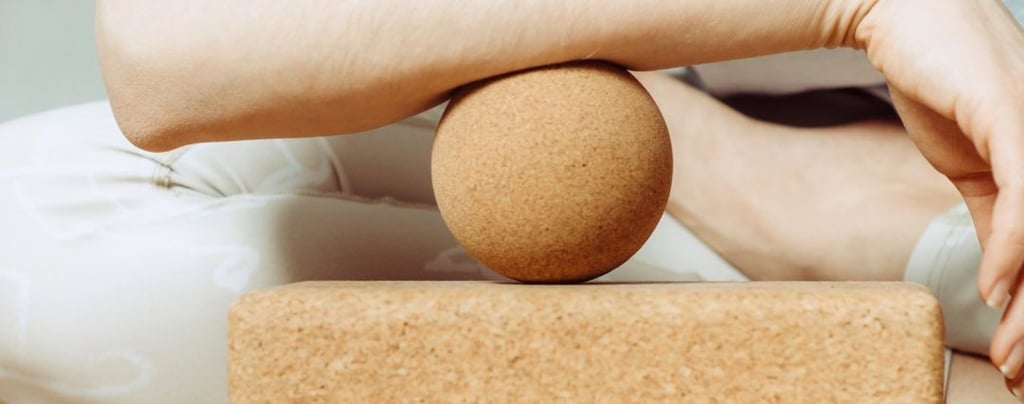Best At-Home Self-Massage Techniques to Reduce Office Syndrome Discomfort
Long hours at a desk, poor posture, and constant screen time can lead to Office Syndrome, a common condition that causes neck pain, shoulder stiffness, headaches, and lower back discomfort. While professional massages can provide relief, you can also manage these symptoms with simple, effective self-massage techniques at home. These methods help improve circulation, release muscle tension, and reduce stress, making your workday more comfortable.
10/10/20253 min read


Long hours at a desk, poor posture, and constant screen time can lead to Office Syndrome, a common condition that causes neck pain, shoulder stiffness, headaches, and lower back discomfort. While professional massages can provide relief, you can also manage these symptoms with simple, effective self-massage techniques at home. These methods help improve circulation, release muscle tension, and reduce stress, making your workday more comfortable.
1. Neck and Shoulder Release Massage
Why it works: Helps relieve stiff neck, headaches, and shoulder tension caused by prolonged sitting.
How to Do It:
Place your right hand on the left side of your neck near the base of your skull.
Apply gentle pressure and slowly massage in circular motions down towards your shoulder.
Repeat on the other side with your left hand.
Use your fingertips to press along the trapezius muscle (top of the shoulders) and gently knead for 30–60 seconds.
Bonus Tip:
Use a warm compress or a heated massage ball to relax tight muscles before starting your massage.
2. Upper Back & Shoulder Blade Massage
Why it works: Loosens up tight shoulder blades and upper back muscles from hunching over a desk.
How to Do It:
Take a tennis ball or massage ball and place it between your upper back and a wall.
Gently lean into the ball and roll up and down, focusing on tight spots.
Hold pressure on sore areas for 20–30 seconds before releasing.
Bonus Tip:
Try this exercise before bedtime to relax muscles and prevent stiffness the next morning.


3. Forearm and Wrist Massage
Why it works: Relieves wrist pain and forearm tension caused by excessive typing and mouse use.
How to Do It:
Use your opposite hand to apply pressure to your forearm muscles.
Slowly roll your thumb along the length of the forearm, applying gentle but firm pressure.
Pay special attention to the inner wrist and palm, pressing and massaging in circular motions.
Bonus Tip:
Stretch your wrists and fingers before and after the massage to improve flexibility and prevent tightness.
4. Lower Back Release Massage
Why it works: Helps relieve lower back tension from prolonged sitting.
How to Do It:
Sit on the floor with a foam roller or a rolled-up towel placed under your lower back.
Gently roll back and forth to massage the lumbar area.
For targeted relief, place a massage ball between your lower back and a chair, pressing into tight spots.
Bonus Tip:
Perform gentle spinal stretches after massaging to enhance mobility and flexibility.


3. Forearm and Wrist Massage
Why it works: Relieves wrist pain and forearm tension caused by excessive typing and mouse use.
How to Do It:
Use your opposite hand to apply pressure to your forearm muscles.
Slowly roll your thumb along the length of the forearm, applying gentle but firm pressure.
Pay special attention to the inner wrist and palm, pressing and massaging in circular motions.
Bonus Tip:
Stretch your wrists and fingers before and after the massage to improve flexibility and prevent tightness.
4. Lower Back Release Massage
Why it works: Helps relieve lower back tension from prolonged sitting.
How to Do It:
Sit on the floor with a foam roller or a rolled-up towel placed under your lower back.
Gently roll back and forth to massage the lumbar area.
For targeted relief, place a massage ball between your lower back and a chair, pressing into tight spots.
Bonus Tip:
Perform gentle spinal stretches after massaging to enhance mobility and flexibility.
Resources
Comprehensive information, practical tips, effective solutions, workplace health
Office Syndrome & Well-being
© 2024. All rights reserved. Designed by Pimclick - SEO Agency
Effective Exercises and Stretches for Relief
The Role of Workplace Wellness Programs
